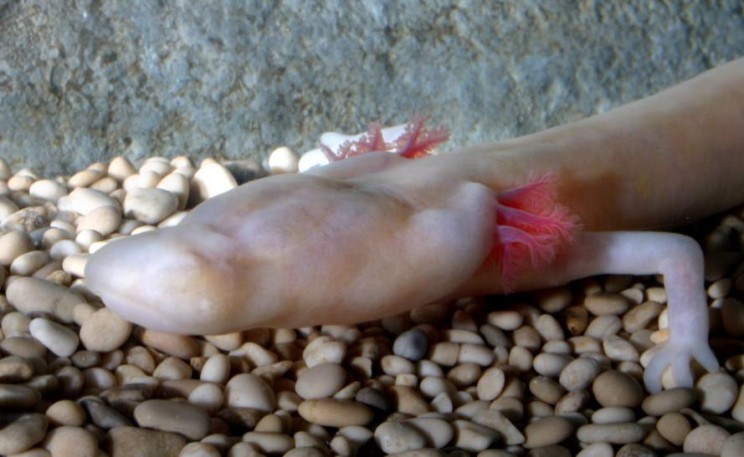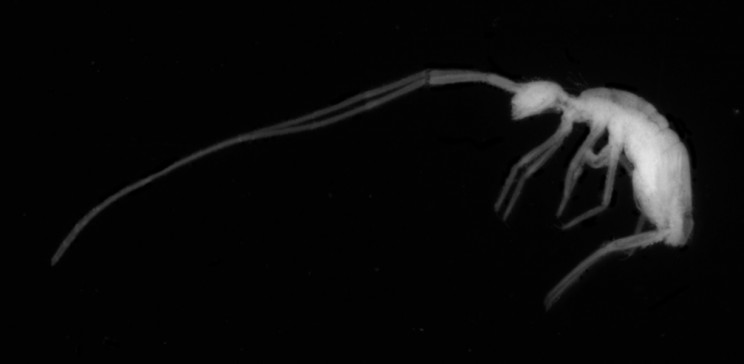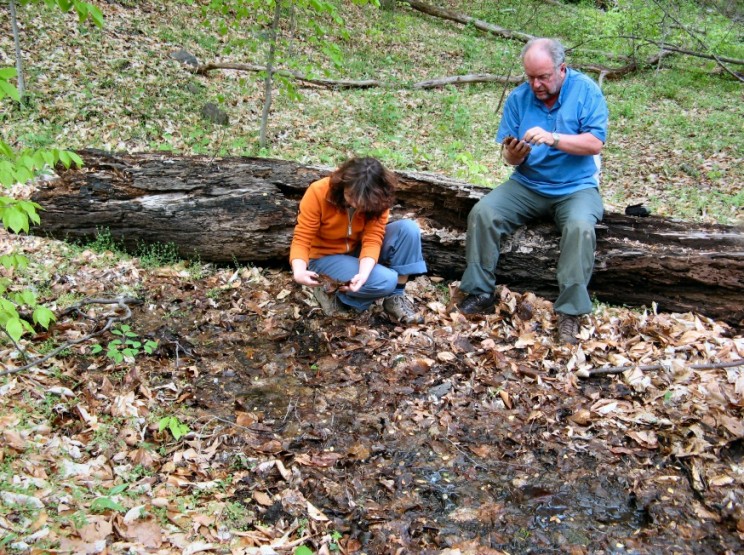It is well known that many of the permanent inhabitants of caves have evolved a bizarre, convergent morphology, including loss of eyes and pigment, elongation and thinning of appendages, and other adaptations to conditions of complete darkness and scarce food. These species include the European cave salamander, or olm, studied since the time of Lamarck.

Sometimes, the extremes of morphology of cave animals strain credibility, as is the case of a springtail from a Cambodian cave, with antennae several times the length of its body.

The adaptations shown by the olm and the springtail illustrated make sense in an environment of constant darkness and scarce food.
Species with morphologies like the olm and the Cambodian cave springtail, occur in and have evolved in habitats that only share the physical feature of darkness with caves. There are seven different kinds of dark habitats that occur close to the boundary of lighted and dark habitats:
- Extremely shallow ground water only a few centimeters underground that emerges in very small seepage springs
- The underflow of rivers
- The cracks and tiny solution tubes at the top of limestone deposits
- The cracks and crevices in rocks
- Shallow aquifers created by the precipitation of calcium carbonate in arid conditions
- The soil
- Lava tubes, which unlike limestone caves, always form a few meters from the surface.
All of these habitat harbor de-pigmented and eyeless species, even though there is often abundant organic matter present, and there are strong seasonal and sometimes daily fluctuations in temperature and other environmental conditions. Except for lava tubes, none provide the allure and adventure of caves.
The first of these categories, the fauna of seepage springs and the associated groundwater, epitomizes the ecological and evolutionary conundrums these shallow subterranean habitats pose. The habitat itself consists of a mixture of rocks and leaf litter underlain by a clay layer. The habitat is relatively rich in organic matter (both dissolved and particulate) and nutrients. Essentially, these are miniature drainage basins, that typically cover a few thousand square meters, and appear to be little more than wet spots in the woods.

These seepage springs and their fauna were first described from sites on Medvednica Mountain in Croatia in 1963 by Milan Meštrov, in several papers that are largely forgotten.
What he did leave is a tongue-twisting name for the habitat—hypotelminorheic, perhaps not surprising for a French word with Greek roots first coined by a Croatian. Unlike deep caves, the hypotelminorheic is high variable, and in many places the seepage spring dries up during the summer months, and most of the water is retained in the colloidal clay. The habitat is so shallow that there are daily temperature fluctuations. In spite of all this, these seeps harbor a number of amphipod, isopod, and snail species with the characteristic long antennae and absence of eyes and pigment characteristic of the deep cave fauna.
In one case, there are enough species of one genus of amphipods (Stygobromus), that relative size of antennae can be compared, and no differences between cave and hypotelminorheic species were found. What was different among the different subterranean habitats, was body size. A repeated pattern of small animals in habitats with small dimensions (soil and the upper layer of limestone) and large animals in habitats with large dimenions (lava tubes and deep caves). The conclusion is that absence of light and habitat size, not availability or organic matter or environmental variability, drives the evolution of the convergent morphology of subterranean animals. In fact, divergence as well as convergence occurs in subterranean habitats. Cene Fišer and his colleagues from the University of Ljubljana, have shown that when three or more species of the amphipod genus Niphargus are present in a subterranean site, their morphological divergence is greater than expected by chance. The task for biologists studying the subterranean fauna is to tease out the convergent and divergent aspects of adaptation.
The post Living in the dark appeared first on OUPblog.


